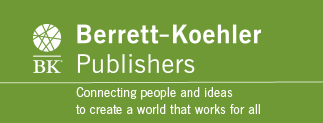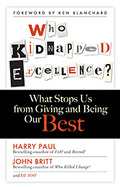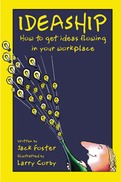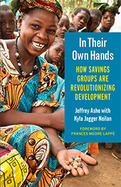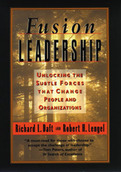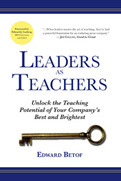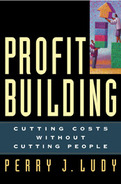Uses a clever and fun parable to identify what excellence is, how we lose it, and how we can regain it.
Most companies talk about excellence, but what does excellence really mean? What specific attitudes and practices lead to excellence? Drawing on years of study and decades of experience, authors Harry Paul, John Britt, and Ed Jent have zeroed in on five core qualities of excellence. In this entertaining and enlightening book, they tell how to give and be your best in each of these five critical dimensions and foster excellence in your organization and in your life. The book begins with a crime being committed: Excellence (personified) has been kidnapped, and Leadership assembles Excellence’s team (Passion, Flexibility, Communication, Competency, and Ownership) and challenges them to work together to get their Excellence back. And who is the culprit? Has Average kidnapped Excellence and replaced Excellence’s team with his own: N. Different, N. Ept, N. Flexible, Miss Communication, and Poser? A mysterious ransom note sparks the struggle between Average and Excellence. Integrated into this tale of organizational excellence is the story of Dave, a delivery man. The kidnapping causes Dave to contemplate his own life and relationships in a way that makes the paths of personal and organizational excellence cross and intertwine. Who Kidnapped Excellence? is a parable that helps organizations and individuals achieve their best in every aspect of their lives.2001
- Sequel to the bestselling How to Get Ideas (more than 40,000 copies sold)
- Introduces a revolutionary concept of leadership: a leader's most important tasks are to make employees believe that they are creative and make it fun to come to work
- Short, simple, and fun to read with dozens of proven, easy-to-implement techniques that will make employees more creative
2014
2004
Fusion Leadership describes a new way of leading based on "fusion," a coming together of whole individuals to accomplish mutual goals based on shared vision and values. Fusion leaders are those who engage not only the bodies and minds of their employees, but also their hearts and souls. Unlike the traditional, hierarchical "fission" management style used for centuries in business, fusion leadership supports personal growth and ingenuity, qualities that facilitate change.
Building on the New Science assumptions that organizations can act as living systems and evolve with changing conditions, Fusion Leadership shows, in practical terms, how individuals and organizations can grow together. Fusion, the authors reveal, unleashes subtle forces-mindfulness, vision, heart, courage, communication, and integrity-which can fundamentally transform organizations.
Mindfulness, they say, represents independent thinking, personal creativity, and an open mind. Vision encompasses the higher purpose toward which people work. Heart represents caring and compassion-positive feelings that underlie workplace relationships. Communication influences vision, values, and emotions; it also involves listening and discerning. Courage motivates people to take risks. Integrity involves honesty, trust, and service-going beyond self-interest to give something to the organization. Through stories, parables, and probing questions, the book helps readers begin to revive these qualities within themselves. It also shows the value and applications of social technologies based on conversation-including dialogue, future search, and whole-scale change-which leaders can use to create organizational fusion, unleashing new synergies among people and achieving far-reaching results.
- Richard Daft is the author of two leading management textbooks, each of which has sold over 230,000 copies: Organization Theory and Design, 6th Edition and Management. 4th Edition
- Offers a striking new metaphor for managing and leading organizations-based on the principle of fusion (a joining together) rather than fission (a splitting apart or separation)
- Presents practical applications of fusion technologies-doable solutions to real problems-and inspires leadership and change
- Provides a personal, practical bridge to New Science and Systems Theory ideas
2009
Every business understands the value of connecting its top leaders to other established and high-potential leaders in the organization. Becton, Dickinson and Company had its leaders make this vital connection in a unique and highly effective way -- through teaching.
Offers a compelling implementation roadmap and includes detailed plans, worksheets, exercises, complete sample training outlines, and other useful tools that speed the transition to leaders as teachers
Dozens of sidebars throughout the book present the participation experiences of leaders at all levels, frequently asked questions (FAQs), and personal testimonials of those who have benefited from participation in the leaders as teacher program.
Most business professionals understand the value of connecting their top leaders to other established and high potential leaders in the organization. Becton, Dickinson and Company (BD), a $6.5 billion medical technology company with 28,000 employees, believes its leaders should make this vital connection in a unique and highly effective way – through teaching. Leaders as Teachers chronicles BD’s 8-year journey to create and deploy a leadership development program that relies on all top leaders (even its CEO) to train other leaders. The initiative, led by author Edward Betof , BD’s vice president and chief learning officer, has produced dramatic results, including measurable business results, a stronger and more supportive learning environment, improved communications and strengthened organizational culture, a more adaptive and change-receptive leadership team, and direct cost savings for the organization.
In addition to its compelling story of change, Leaders as Teachers offers a roadmap for other organization wishing to implement and benefit from BD’s experience. This complete roadmap includes detailed advice on how to introduce the leaders as teachers program and advice on how to overcome resistance to change; how to select, recruit, and train new leaders for the program; and how to evaluate the effectiveness of a fully functioning program. The book provides all the necessary tools, including detailed plans, worksheets, exercises, complete sample training outlines, and extra materials that speed the transition to leaders as teachers and take full advantage of BD’s extensive experience. Dozens of sidebars throughout the book present the participation experiences of BD’s leaders at all levels, frequently asked questions (FAQs), and personal testimonials of those who have benefited from participation in the leaders as teacher program.
• Offers a compelling implementation roadmap and includes detailed plans, worksheets, exercises, complete sample training outlines, and other useful tools that speed the transition to leaders as teachers
• Dozens of sidebars throughout the book present the participation experiences of leaders at all levels, frequently asked questions (FAQs), and personal testimonials of those who have benefited from participation in the leaders as teacher program.
Most business professionals understand the value of connecting their top leaders to other established and high potential leaders in the organization. Becton, Dickinson and Company (BD), a $6.5 billion medical technology company with 28,000 employees, believes its leaders should make this vital connection in a unique and highly effective way – through teaching. Leaders as Teachers chronicles BD’s 8-year journey to create and deploy a leadership development program that relies on all top leaders (even its CEO) to train other leaders. The initiative, led by author Edward Betof , BD’s vice president and chief learning officer, has produced dramatic results, including measurable business results, a stronger and more supportive learning environment, improved communications and strengthened organizational culture, a more adaptive and change-receptive leadership team, and direct cost savings for the organization.
In addition to its compelling story of change, Leaders as Teachers offers a roadmap for other organization wishing to implement and benefit from BD’s experience. This complete roadmap includes detailed advice on how to introduce the leaders as teachers program and advice on how to overcome resistance to change; how to select, recruit, and train new leaders for the program; and how to evaluate the effectiveness of a fully functioning program. The book provides all the necessary tools, including detailed plans, worksheets, exercises, complete sample training outlines, and extra materials that speed the transition to leaders as teachers and take full advantage of BD’s extensive experience. Dozens of sidebars throughout the book present the participation experiences of BD’s leaders at all levels, frequently asked questions (FAQs), and personal testimonials of those who have benefited from participation in the leaders as teacher program.
2000
Perry J. Ludy offers a hands-on guide that shows managers how to move profit-and-loss financial reviews beyond the basics to creative solutions and genuine action plans. Using the author's four-step Profit Building Process (PBP), Profit Building shows how to organize teams with the specific purpose of improving profit-while providing an opportunity for employees to participate in developing cost reduction strategies so that profit improvement is perpetual.
A system of step-by-step activities designed to produce immediate and continuous results, the PBP shows managers how to apply concepts from prior learning-such as teams, innovation management, and performance improvement planning-to create tailor-made strategies for any organization. And it introduces "Questions Brainstorming," a new twist to traditional brainstorming that fosters avid group participation resulting in better solutions.
In order to achieve success beyond today, business leaders must leverage all resources available within the organization to improve profit, reduce cost, and create a better place to work. Profit Building is an executive handbook and a quick desk reference for managers that shows how to do just that.
- An easy-to-read, how-to guide for executives, managers, business professionals, entrepreneurs, and change leaders who are seeking profit improvement strategies that fit their organizations
- By a working executive who has put these ideas into action and seen them work
- Provides a cost-reduction alternative to employee layoffs that also helps managers motivate employees to generate creative ideas
- Reveals how to immediately improve profits with over 100 innovative profit building ideas
